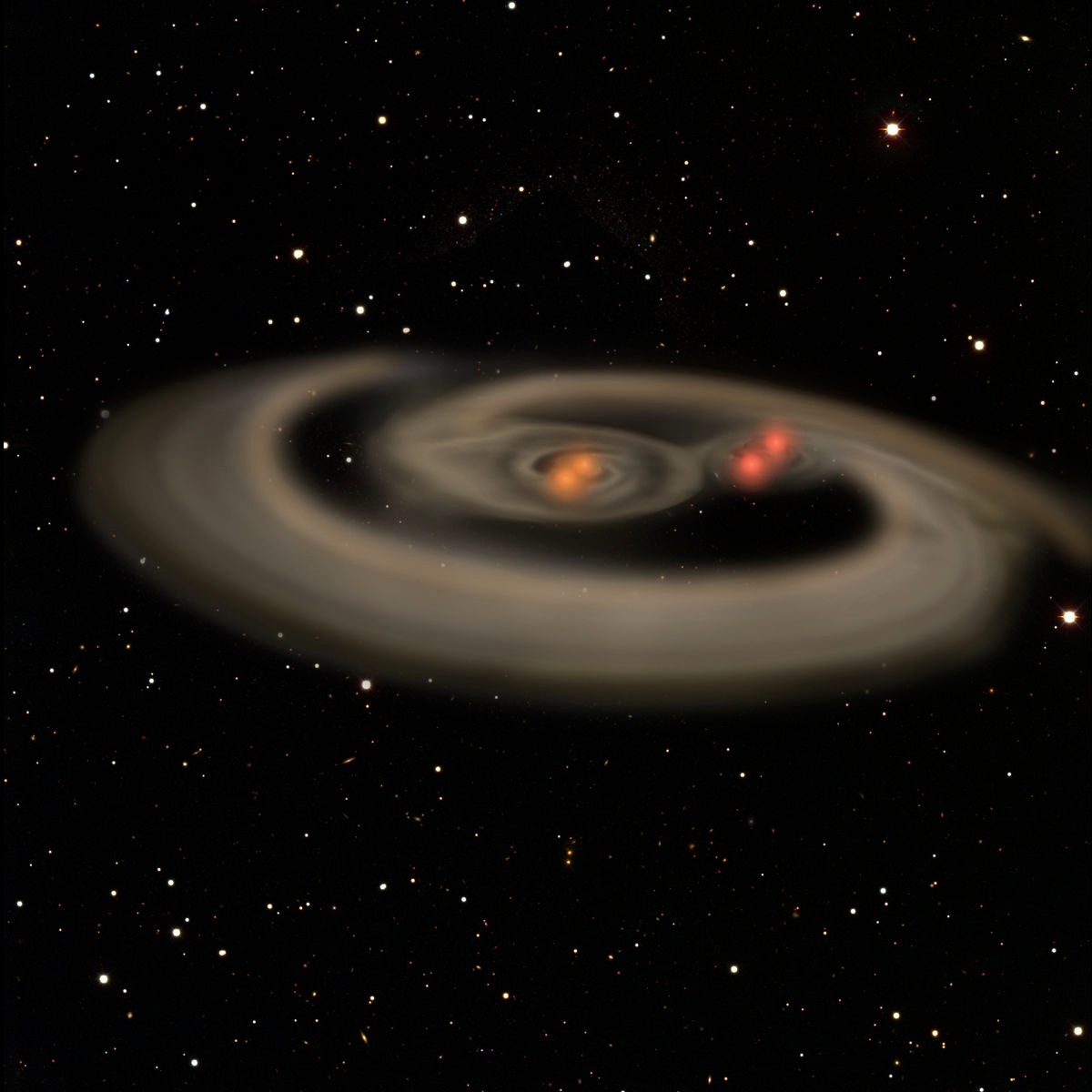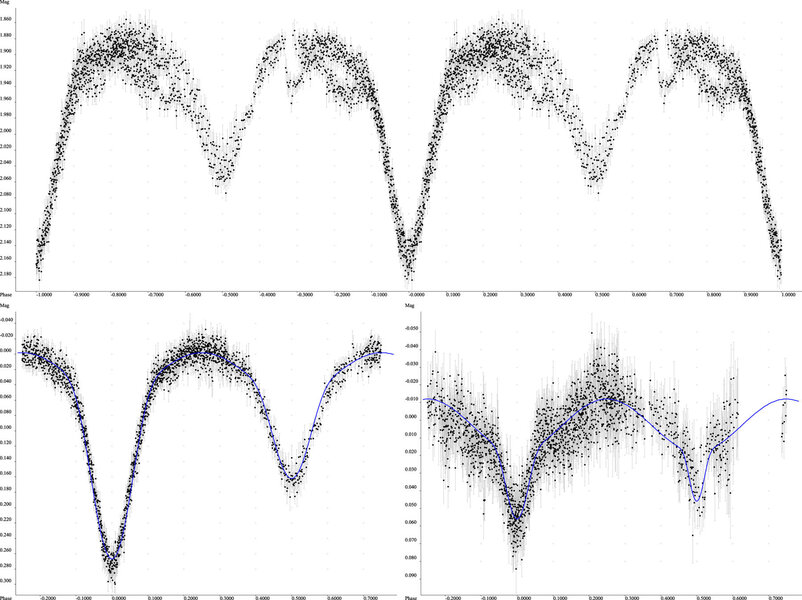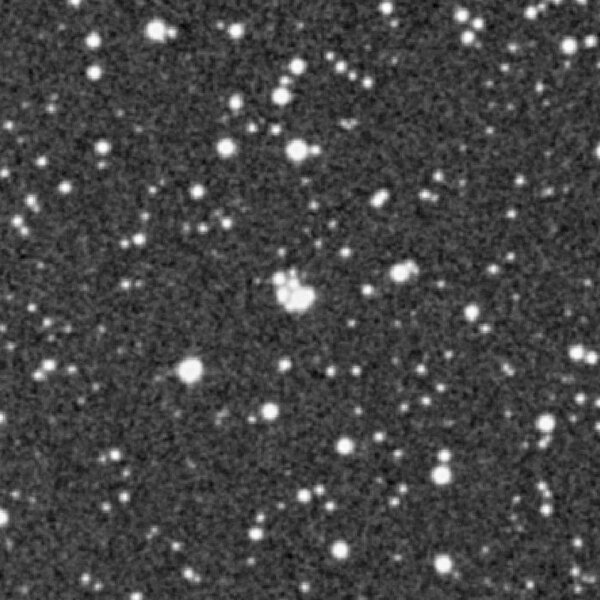Create a free profile to get unlimited access to exclusive videos, sweepstakes, and more!
Yo dawg, I heard you like eclipsing binaries, so I put an eclipsing binary around your eclipsing binary

When you look at the stars in the sky, they appear alone, each separate from the other. But that’s an illusion brought by distance; in fact as many as half of all the stars in the sky are members of multiple star systems. Binaries, trinaries, even some with five or six stars, all orbiting each other in complicated manners.
There’s a special class of binary stars called eclipsing binaries: These are stars whose orbit we see edge-on (or nearly so), so that from our point of view we see one star physically block the other, then half an orbit later we the second star block the first.
In general, one star is brighter (called the primary) and the other is dimmer (the secondary). During primary eclipse, when the brighter star is blocked by the dimmer one, the light from the system drops a lot. During secondary eclipse, when the primary blocks the secondary, the light doesn’t drop as much. So when you make a graph of the system’s light over time (what astronomers call a light curve), there’s a big dip, then a smaller dip, then a big dip again, and on and on.
If you want to see this in action, there’s an online applet that shows two stars orbiting and the amount of light you see from them. Enter A for the first star and F for the second, and make the distance 4 solar radii (don’t forget to hit the “Enter Values” button). You’ll see how this works pretty clearly (note: in the sim the bigger star is brighter; the values for temperature and size are displayed).
Stars like this are astrophysically important! We can determine the stars’ masses from their orbital period, for example, and because they’re at essentially the same distance from Earth, the brightness difference between the stars represents a real difference in luminosity. From this lots of other physical characteristics fall out. Many astronomers dedicate a lot of time to observing them.
An astronomer, Pavel Cagaš, used a private 30-centimeter telescope in Zlín, a city in the Czech Republic to look at stars in the constellation of Auriga. And oh my did he find an interesting one! It’s called CzeV1640 (from the Czech Variable star catalog; it’s also called UCAC4 591-028146 from a different catalog), and it shows what looks at first glance to be an obvious eclipsing binary light curve. There’s a big dip, then a smaller one, and the pattern repeats.
But. When you look at the curve carefully, it’s not so smooth. There are a bunch of deviations to it, added smaller dips, most noticeable in the second half of the light curve.
What’s going on here? What Cagaš proposed is that we’re not seeing two stars here, we’re seeing four. There are actually two eclipsing binary pairs here, two pairs of binary stars which in turn orbit each other. This is called a hierarchical multiple system.
So there’s one binary, called CzeV1640A (composed of two stars which would then be CzeV1640 AA and AB), and another called CzeV1640B (with the two stars CzeV1640 Ba and BB). CzeV1640A has brighter stars, and creates the primary double-dip seen in the graph, while CzeV1640B has fainter stars, which create the added smaller dips. We see the eclipses of both pairs at the same time, creating the weird, confusing light curve.
The two stars making up CzeV1640A orbit each other every 0.55 days, while the stars making up CzeV1640B have an 0.84 day orbit. Those are tight orbits! Sometimes when stars get to close their mutual gravity pulls their material together: They wind up sharing their outer layers and form a peanut-shaped star called a contact binary. In this case, though, the stars are separated enough in both binaries to be called detached.
Mind you, this is a preliminary paper, so there are still lots of questions. What are the actual stellar types of the stars making up this system, (like, are they massive and blue, or low mass and red, or in between like the Sun?), what are their orbits actually like, and how long does it take the two binaries to orbit each other?
I wonder. It seems likely that these stars all formed together form the same gas cloud, since we see both binary pairs with their orbits edge-on. Does this mean we see the orbit of the two binary pairs around each other edge on? That means that we’d see them eclipse each other when they line up, and that would create an ungodly mess of a light curve. I’d love to see that!
I have to note that when I looked for an image of this in the Digitized Sky Survey, the sky is part of a relatively tight knot of other stars. Given this, it’s possible that we’re seeing two unrelated binary pairs that happen to lie close to together. I can’t discount that. However, Cagaš notes that the ratio of the two orbital periods is close to 3:2 (in other words, 0.84 / 0.55 = 1.52). Sometimes in gravitational systems, where objects are in orbit, you see simple fractions like this. It’s called a resonance, and it pops up naturally as all the objects interact with each other. I’m not sure how this would work in a hierarchical binary, unless the two pairs of stars interact with each other somehow, but that seems unlikely to me. It could be coincidence, but it may point to a deeper connection.
As usual, the discovery of an unusual object just leads to more questions. I’d be fascinated to see a follow-up observation of this interesting pair, and a more thorough analysis of their orbits and physical characteristics. Stars like this may be rare, but when you have a galaxy with a few hundred billion stars in it, you get a lot of chances for rare stuff to happen.
P.S. Yeah, I know I used this same meme for an article title back in April, but this was too funny not to use again.





























